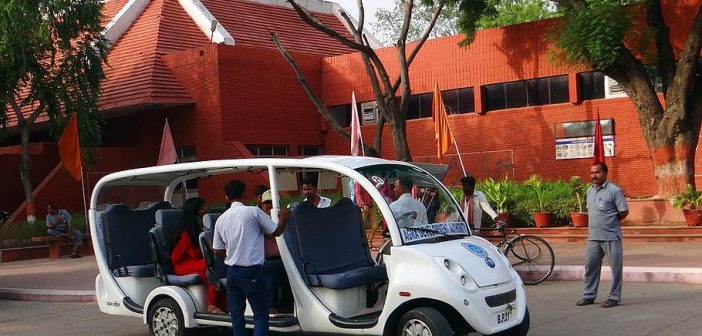India’s journey towards an electric future is gaining momentum with the expected price drop in electric vehicles (EVs) by 2024, signaling a pivotal shift towards sustainability and innovation in the automotive sector. The anticipation of EVs achieving price parity with their petrol and diesel counterparts heralds a significant transformation, driven by a combination of technological advancements, government incentives, and increasing market competition.
Driving Down Costs: The Path to Affordability
The Indian government has set an ambitious target for EV adoption, aiming for 30% of vehicles on the road to be electric by 2030. This goal is supported by a range of policies, including GST reductions, income tax exemptions on EV loans, and the establishment of a national charging infrastructure. These measures, along with the natural progression of the market, have led to a substantial growth in EV sales, which surged by 206% in 2022 compared to the previous year.
The primary factors influencing the expected price drop in EVs include:
- Reduction in Battery Costs: Battery prices, a significant component of EV cost, are predicted to continue their downward trend, making EVs more affordable and potentially cheaper than traditional vehicles.
- Government Incentives: A variety of incentives, such as reduced GST rates and tax exemptions, are making EVs financially attractive to consumers.
- Economies of Scale: Increased production and demand for EVs are expected to lower production costs through economies of scale.
- Technological Advancements: Continuous improvements in EV technology may lead to cost efficiencies, further reducing prices.
2024 and Beyond: What to Expect
By 2024, the prices of EVs in India are expected to align more closely with those of petrol and diesel cars, thanks to concerted efforts from startups, major auto manufacturers, and government initiatives. Union Road Transport and Highways Minister Nitin Gadkari emphasized the role of innovation and competition in driving down the costs of EV manufacture, alongside the expansion of EV charging infrastructure across national highways.
The EV market in India is projected to see a more than tenfold increase in volume by 2030, reaching over $100 billion in revenue. This growth will be supported by focused interventions in product development, distribution optimization, software development, and the scale-up of charging infrastructure. However, challenges such as pricing, range anxiety, and the need for more charging options must be addressed to achieve this growth.
A Greener Future on the Horizon
India’s EV market is at a crucial inflection point, with the potential to become a global leader in sustainable transportation. The expected price reduction in 2024 is just the beginning of a broader shift towards electric mobility, driven by a combination of market forces, government support, and technological innovation. As the country continues to navigate the challenges and opportunities of this transition, the future of electric vehicles in India looks promising, promising a cleaner, greener, and more sustainable mode of transportation for millions.
This move towards electric vehicles represents not just a shift in the types of cars on the road, but a deeper transformation in India’s automotive industry, emphasizing sustainability, innovation, and accessibility. As the barriers to EV adoption continue to fall, the dream of a greener future becomes increasingly within reach, setting a precedent for other nations to follow.






